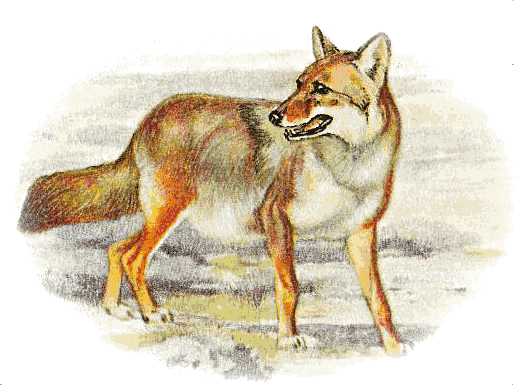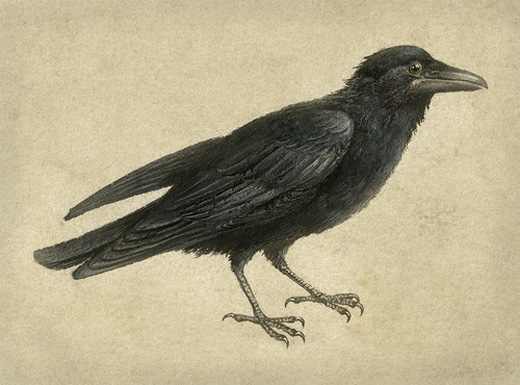The Coyote and the Woodpecker

Well, once upon a time a Coyote and his family lived near the edge of a wood. There was a big hollow tree there, and in it lived an old Woodpecker and his wife and children. One day as the Coyote-father was strolling along the edge of the forest he met the Woodpecker-father.
“Hin-no-kah-kée-ma” (Good evening), said the Coyote; how do you do to-day, friend Hloo-rée-deh?”
“Very well, thank you; and how are you, friend Too-wháy-deh?”
So they stopped and talked together awhile; and when they were about to go apart the Coyote said:
“Friend Woodpecker, why do you not come as friends to see us? Come to our house to supper this evening, and bring your family.”
“Thank you, friend Coyote,” said the Woodpecker; “we will come with joy.”
So that evening, when the Coyote-mother had made supper ready, there came the Woodpecker-father and the Woodpecker-mother with their three children. When they had come in, all five of the Woodpeckers stretched themselves as they do after flying, and by that showed their pretty feathers–for the Hloo-rée-deh has yellow and red marks under its wings. While, they were eating supper, too, they sometimes spread their
wings, and displayed their bright under-side. They praised the supper highly, and said the Coyote-mother was a perfect housekeeper. When it was time to go, they thanked the Coyotes very kindly and invited them to come to supper at their house the following evening. But when they were gone, the Coyote-father could hold himself no longer, and he said:
“Did you see what airs those Woodpeckers put on? Always showing off their bright feathers? But I want them to know that the Coyotes are equal to them. I’ll show them!”
Next day, the Coyote-father had all his family at work bringing wood, and built a great fire in front of his house. When it was time to go to the house of the Woodpeckers he called his wife and children to the fire, and lashed a burning stick under each of their arms, with the burning end pointing forward; and then he fixed himself in the same way.
“Now,” said he, “we will show them! When we get there, you must lift up your arms now and then, to show them that we are as good as the Woodpeckers.”
When they came to the house of the Woodpeckers and went in, all the Coyotes kept lifting their arms often, to show the bright coals underneath. But as they sat down to supper, one Coyote-girl gave a shriek and said:
“Oh, tata! My fire is burning me!”
“Be patient, my daughter,” said the Coyote-father, severely, “and do not cry about little things.”
“Ow!” cried the other Coyote-girl in a moment, “my fire has gone out!”
This was more than the Coyote-father could stand, and he reproved her angrily.
“But how is it, friend Coyote,” said the Wood pecker, politely, “that your colors are so bright at first, but very soon become black?”
“Oh, that is the beauty of our colors,” replied the Coyote, smothering his rage; “that they are not always the same–like other people’s–but turn all shades.”
But the Coyotes were very uncomfortable, and made an excuse to hurry home as soon as they could. When they got there, the Coyote-father whipped them all for exposing him to be laughed at. But the Woodpecker-father gathered his children around him, and said:
“Now, my children, you see what the Coyotes have done. Never in your life try to appear what you are not. Be just what you really are, and put on no false colors.”
retold by Charles Lummis
This is a collection of stories from the Isleta Pueblo people of New Mexico. Charles Lummis [1859-1928] was a pioneering writer, photographer, amateur anthropologist and adventurer
Lummis moved to New Mexico, where he embedded himself in Pueblo culture and collected the stories originally published as The Man Who Married the Moon in 1894
